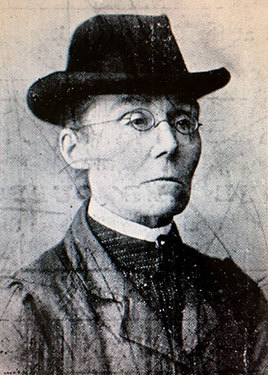queerwelsh:“Take me as you find me; if there’s no harm in it then there is nothing wrong
queerwelsh:“Take me as you find me; if there’s no harm in it then there is nothing wrong with it and I am not ashamed of being myself.” Amy Dillwyn was born Elizabeth Amy Dillwyn in Swansea on the 16th of May, 1845, and, by the turn of the century, would become a pioneering industrial and lesbian novelist. Amy was born to Anglican Welsh gentry, Lewis Llewelyn and Elizabeth Dillwyn (née De la Beche). Lewis Llewelyn Dillwyn was the Liberal MP for Swansea for 37 years, from 1855, and the owner of Dillwyn Spelter Works. Amy also had an older sister and brother, Mary (known as Minnie) and Henry (Harry), and a younger sister, Sarah (Essie). Amy’s uncle, John Dillwyn Llewelyn, and aunt, Mary Dillwyn, were both photographers - Mary was perhaps the first female photographer of Wales.(Harry and Amy, taken by Mary Dillwyn, 1853.) In early 1863, Amy ‘made her debut into society’ and later that year became engaged to Llewellyn Thomas of Llwynmadoc, who she had known since they were children. However, Llewellyn died of smallpox in 1864 before the wedding could take place. Alison Favre writes of this period; ‘Despite some misgiving about marriage, she was number she learned of her fiancé’s sudden death…’(Amy in her engagement dress in 1863 and in her mourning dress in 1864.)Amy however continued the Season, engaged herself in social engagements, and especially enjoyed visiting Margam Castle with her brother Harry. Amy especially had a close relationship to Olive Talbot of Margam, an aristocrat and invalid who Amy would refer to as her ‘wife’ in her diaries. These feelings were apparently unrequited, and is thought to be the source of the recurring theme of unrequited love in Amy’s writing.(Olive Talbot and Amy in Buxton in 1871.)In her late 20′s and 30′s she started writing, out of illness, depression and frustration with her unrequited love for Olive (in Kirsti Bohata’s words). Certainly she was frustrated also with becoming a ‘spinster’ and ‘old maid,’ considering devoting herself to God instead, and she first wrote religious allegories, and then short stories for the Spectator. Her first novel, The Rebecca Rioter, was based on stories her grandfather told her of his, and her father and uncle’s, experiences in the Rebecca Riots, and the novel certainly dealt with pushing gender boundaries, class boundaries, and forbidden love, which are also themes in her other novels. Jill, however, most represents her feelings for Olive, as Jill, the lesbian protagonist, a tomboy and rebel who pushes all kinds of boundaries, runs away from her uncaring upper-class family, pretends to be a maid, and then falls for an aristocratic woman, Kitty, and this romantic friendship certainly seems to represent Amy’s romantic friendship with Olive. Amy had published her six novels by 1892, when her father, Lewis Llewelyn Dillwyn, died - Harry had died in 1890 and Minnie also had died. Amy lost their family home when Lewis Llewelyn’s grandson, and Minnie’s son, John inherited the Hendrefoilan estate. Amy found herself a purpose however when she managed and saved the Dillwyn Spelter Works, saving 300 jobs, and became one of the first female industrialists in Britain. By 1899 the Spelter Works were out of debt, and as Amy wrote; “at last the works are really mine.”Amy became locally famous as a businesswoman, as well as for her masculine image, of her dress and ‘cigar-smoking’ - articles then headlined her cigar-smoking, and indeed still do. This image made her known nationally, and perhaps even internationally, but Amy Dillwyn was significant for more than her unique clothing and cigars, but as a pioneer, a feminist, a social activist, and as a boundary-crossing novelist and diarist, who wrote honestly and passionately about her lesbian love.Amy Dillwyn died in Swansea on the 13th of December, 1935, aged 90.Three of Amy’s novels, previously forgotten about or ‘under-read,’ have been republished by Honno, and Kirsti Bohata at Swansea University continues to research Amy Dillwyn’s life and her place in lesbian history.(Amy Dillwyn, with her dog and her cigar, via) Sources & Further Reading:Kirsti Bohata and CREW Amy Dillwyn research.Amy Dillwyn’s writing: The Rebbeca Rioter (1880), Chloe Arguelle (1881), A Burglary; Or Unconscious Influence (1883), Jill (1884), Nant Olchfa (1886-7), Jill and Jack (1887), Maggie Steele’s Diary (1892). David Painting, Amy Dillwyn, 1987.Images from here and here. All other images, unless stated otherwise, via David Painting’s Amy Dillwyn. -- source link
Tumblr Blog : queerwelsh.tumblr.com
#cymraeg#leispiach

